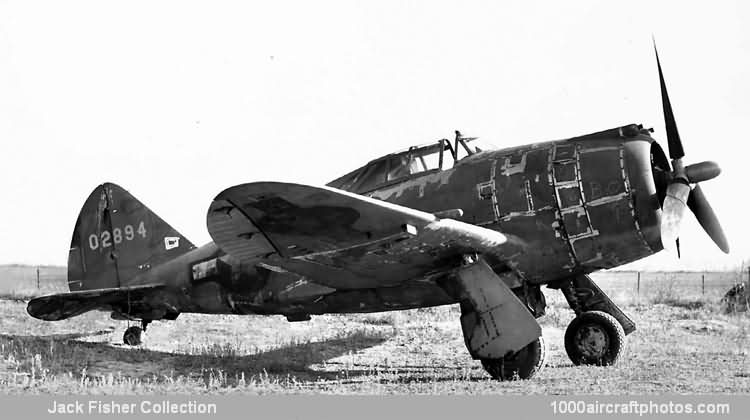12/31/2010. Remarks by Johan Visschedijk: "After the USAAC had placed a contract with the Seversky Aircraft Corporation, on May 12, 1939, for 13 service evaluation AP-4s under the designation YP-43, some redesign was undertaken by what now became Republic Aviation. A Pratt & Whitney R-1830-35 turbo-supercharged engine of 1,200 hp was adopted; armament was increased to two 0.5 in (12.7 mm) cowl and two 0.3 in (7.62 mm) wing guns; the turbo-supercharger intake was transferred from the port wing root to beneath the engine and, as part of a drag reduction program, the rear decking raised and the transparent area aft of the pilot's seat reduced.
The first YP-43 was delivered in September 1940, and the last in April 1941. The intention was to follow these with 80 examples of a more powerful version, the P-44 with a 1,400 hp Pratt & Whitney R-2180-1 engine. In the event, the P-44 was overtaken by an entirely new design, the P-47B, and, as it became necessary to keep the factory occupied pending introduction of the more advanced fighter, the order for P-44s was cancelled and an order for 54 P-43s substituted. Further delays in the P-47B led to this order being followed by a contract for 80 P-43As powered by the R-1830-49 engine with similar ratings to the -35. The first P-43 Lancer was delivered on May 16, 1941.
In the following month, delays with the P-47B having arisen, 125 P-43A-1s were ordered, using Lend-Lease funds, for China, although only 51 were eventually delivered to that country. The P-43A-1 (R-1830-57 engine) introduced self-sealing fuel tanks and all four guns were of 0.5 in (12.7 mm) caliber. Deliveries of the P-43A-1 were completed in March 1942, by which time most aircraft, other than those shipped to China, were being converted for the tactical reconnaissance mission as P-43Bs (150), P-43Cs (two), P-43Ds and P-43Es according to the camera installation.
Four P-43A-1s and four P-43Ds were supplied to the RAAF to serve on photo reconnaissance duties. In China, the P-43A-1 – several of which were flown by the American Volunteer Group – saw only restricted operational use because of its unreliable self-sealing fuel tanks and difficulties with the turbo-super-charger."
